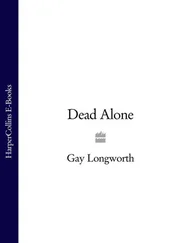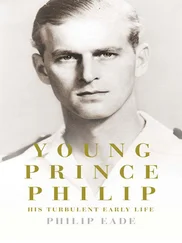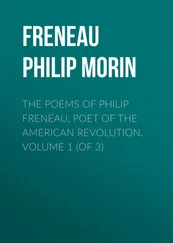Capitalism cannot work its miracles without capital, and with foreigners reluctant to invest and newly rich Russians spiriting their assets away to foreign banks, no miracle was possible. Before long about $2 billion was leaving the country each month — more than all the aid, loans, credit and investment that were coming in. 5So far things had gone very badly wrong. It seemed that the only way to create the elusive economic miracle was to stimulate appetites and let greed off the leash.
This was soon done. In August 1992 Yeltsin signed a decree disposing of state property to raise money. Vouchers were issued entitling every adult in the country to 10,000 rubles-worth of shares in the enterprise or institution with which they were associated. Alternatively they could sell their vouchers. Voucher auctions would be arranged. The randomness of the method met with the approval of Western economic theorists. Most people might have no idea of value, they said, but the vouchers would surely end up in the hands of people who did. And so it turned out. Most Russians, bemused by the process, sold their vouchers — many of them to touts who offered ready money for them on the street. Managers and new businessmen, who had a better understanding of values than the general public, made killings and manoeuvred themselves into positions to make more. The proceeds, intended to reduce the state’s massive deficit, turned out to be disappointing, however, because during the interval that passed before they reached the treasury their value had been savaged by inflation. On the other hand gigantic windfall profits went to a handful of sharp-eyed and unscrupulous operators who exploited the reformers’ mistakes.
The beneficiaries were mainly young men in the know. Since there were so few of them, and the industries they came to control dominated the Russian economy, they were soon wielding political power as well as financial clout. Aside from Viktor Chernomyrdin, a government functionary who was no longer young, the first generation of multimillionaires included Mikhail Khodorkovskii, Vladimir Gusinskii, Petr Aven, Roman Abramovich and Boris Berezovskii. Able youngish, civil servants, city functionaries, economic advisers, scientific researchers, they turned themselves into biznesmeny and swiftly graduated to become tycoons dominating important industries — aluminium, natural gas, air transport, banks, the media, and oil. Several of them came to be closely connected with organized crime as well as with government, for the atmosphere, in Moscow particularly, closely resembled that of Chicago during prohibition and they needed protection, whether from former KGB operatives or from the Chechen and other organized mobs. 6
While the plutocrats counted their assets, the masses counted the costs of the transition. At least a third, and probably over half, the population had been forced below the poverty line, and the health statistics of the first years of post-communist freedom told their own story. Between January 1992, when the switch from a planned to a market economy began, and June 1994 the death rate in Russia rose by over 30 per cent, to a level unknown in any country that was not at war or suffering from famine. The rise in mortality among males of working age was particularly steep. They died from heart attacks, strokes, alcohol poisoning, suicide and murder. A UNICEF study attributed the sharp increase in adult deaths to stress arising from fear of unemployment, although despair at the collapse of a familiar world seems also to have played a part. A dramatic increase in infant mortality, which more than doubled in the period 1991-3, was no less alarming. Child health had been improving steadily until 1990. 7Now, suddenly, health-care services and education were in danger of collapse. They would have done so had conscientious teachers, doctors and nurses not continued to work even when their modest salaries were unpaid. And unpaid workers isolated amid the vast wastes of the north also worked on for lengthy periods without reward simply because they and their families could not afford the costs entailed in moving and starting a new life elsewhere.
In December 1993 President Yeltsin approved a new coat of arms for Russia. It took the form of a Byzantine eagle with two heads surmounted by three crowns. 8It might seem odd that Yeltsin, who had played a key role in stripping Russia of empire, should have adopted this imperial symbolism for the new, truncated Russia, but it was not the only irony. A former Communist apparatchik, he was now the scourge of Communism. This and his pious commitment to the cause of democracy, which he paraded as religiously as any seventeenth-century tsar paraded his commitment to Christ and all the saints, commended him to Washington and London, despite the fact that only two months before adopting the imperial insignia he had ordered troops to launch a bloody attack on parliament and shut it down.
A clash between the democratically elected President and the democratically elected parliament was, perhaps, inevitable. The social cost of transition had been causing great distress and alienating people from economic reform. Many Russians who had believed the promises that market reforms would conjure up an economic miracle were now disenchanted; nostalgia was growing fast for the past that had been lost, and the change in mood was reflected by parliament. The truth was that, given Russia’s circumstances, democracy was incompatible with a market economy.
It made for a fraught political scene. Accusations of corruption had been flying; an attempt was launched to impeach President Yeltsin. Despite the frantic efforts of his political staff, he received only a narrow endorsement in a national referendum, which had also rejected his proposal to dissolve parliament. At this point one of his staunchest supporters, the former air-force general Aleksandr Rutskoi, suddenly joined the opposition. Appointed by Yeltsin to chair a commission on corruption in government, he had found evidence of unlawful dealings leading straight to the door of the President’s office and implicating several of his associates. Rutskoi denounced him on television, and was himself accused in his turn. So the President’s stand-off with parliament continued.
Negotiations on the constitution made some progress, but on 21 September Yeltsin announced that he was dissolving parliament. The Supreme Court declared this to be illegal, and demonstrators, some of them armed, gathered in the parliament building. Security troops then surrounded the building and cut off all services to it. An ultimatum was delivered: the parliament building must be cleared by Monday 4 October. On 3 October crowds marched to the television tower and the parliament building. There were exchanges of fire, and at least 100 casualties. Yeltsin had won. It has been suggested that the parliament and its defenders were partly to blame for the bloodshed. However, Roy Medvedev has found evidence of Yeltsin’s intent to abolish parliament, if necessary by force, whether it was defended or not. 9So the people’s defenders were defeated, and a constitution which increased Yeltsin’s powers as president was imposed. In the words of a leading Western historian of the post-communist period, Yeltsin had got his way only by the use of ‘methods involving electoral fraud. The birth of the new Russia was induced by anti-constitutionality, violence and corruption.’ 10Despite this, the United States issued no protest. As the leading proponent of both market economies and democracy, it regarded the former as much the more important.
By now Yeltsin was hardly popular among Russians, but the media were supportive of him, as were most Western governments. No challenger of any political stature was visible, and he did not yet have to seek re-endorsement. So he continued to preside over Russia’s transformation and its decline both at home and abroad. Auctions of state enterprises now took place. However, which huge enterprises would go to whom and at what prices was to a great extent determined by a small group of officials and businessmen in advance of the auctions, and the auction process itself was fraudulent. Competitors were bought off or threatened, and sometimes the successful bid was the only one. 11Then the government introduced a new scheme to raise money: offering the new industrial oligarchs shares in lucrative industries as security against loans. If the government was unable to repay the loans, as seemed likely, then the lenders were entitled to take possession of the shares.
Читать дальше





![Stephan Orth - Behind Putin's Curtain - Friendships and Misadventures Inside Russia [aka Couchsurfing in Russia]](/books/415210/stephan-orth-behind-putin-s-curtain-friendships-a-thumb.webp)





